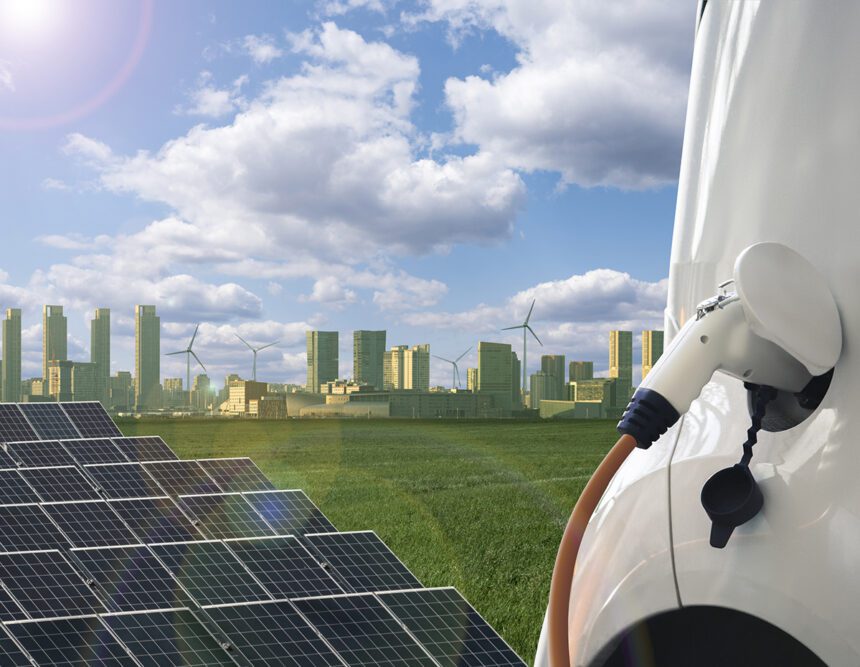The evolving climate technology landscape is a mosaic of innovations, some incredibly consequential and others doomed to failure. As expected, many of them have not yet gone to trial. One thing is certain though. Commercial the real estate balance sheet with its role in climate change and climate solutions is here.
Around 40 percent of global emissions are linked to real estate. This, “combined with new regulations, in the United States and around the world, changing tenant preferences (and) a preference for allocating capital towards greener strategies” explains why climate technology is imposes itself as a critical subject,” observed Abby Levine, leader of Deloittereal estate strategy and sustainable development practices. .
READ ALSO : How can CRE manage climate risk?
There is always a lot of excitement around something as promising as climate technology, but understanding the different subsectors and the granular nature of this new asset class requires digging in and uncovering details, said Mark Grinis: EYis the American leader in real estate, hospitality and construction.
“You start with incredible hype, but then you move to a little deeper understanding and where the things that give immediate ROI are functional, practical and applicable,” he explained. “I think we’re kind of heading toward that.”
Climate technology innovations span the entire lifecycle of a property, from building materials, windows, lighting technology, heating and cooling technology to the solutions used to manage the building, including carbon accounting and distributed energy solutions.
Building new commercial real estate properties with climate technology in mind, even as a key goal, is not enough, said Levine, who is also a member of the sustainability, climate leadership team and equity from Deloitte. Retrofitting existing buildings with these technologies is essential, but new facility and brownfield projects will require capital.
One of the hottest topics of the year, artificial intelligence, will have a role to play in climate technology that is probably not yet fully understood. “It’s a super exciting time,” Levine remarked. Likewise, “the parallels between proptech and climate technology follow similar trends,” Grinis said.
“Technologies that benefit commercial real estate – and which we have helped install in buildings across the United States – can range from heat pumps and electric vehicle charging to air sealing and to energy-efficient windows and beyond,” added Jon Moeller, COO at Brooklyn-based climate tech startup BlocPower.
Demand, supply and insurance
Demand for properties with advanced climate technology will undoubtedly determine the pace of implementation. A question to ask is, “What is the cap rate for people purchasing these buildings?” » said Grinis. “What percentage of institutional capital said, ‘We’re only going to do this quality, but we’re going to pay for it’? »
For some promoters, insurance companies may force their hand. Grinis noted that some developers have been told in recent years that their insurance rates for completed projects must be concerning-subscribed because the cost of insuring the property has doubled due to the increase in climate-related risks.
READ ALSO : Why CRE insurance challenges are intensifying
“In California and elsewhere, large insurers are getting out of the market and that’s obviously going to change the final cost,” Grinis said. “If you’re located on or near water, how do you address this issue? I know a lot of developers (whose first two floors of properties are designed a certain way in anticipation of flooding and will be resilient to that to the extent that it happens.”
Support small businesses
In the global climate technology game, the United States is keeping pace with other leading countries. “I would have said a few years ago that the United States is lagging behind in investment, compared to other countries, particularly countries in Europe and Asia, but the United States have certainly caught up,” Levine said.
Eight countries account for the majority of global investment and entrepreneurship in climate technologies, Levine noted: Australia, Canada, China, France, Germany, India, the United Kingdom and the United States. From 2000 to 2022, approximately 2,400 climate technology companies were founded and 9,000 financing agreements. executed and $148 billion invested globally, according to a recent Deloitte report. The report says activity accelerated significantly after 2013. The United States leads the pack in terms of global climate technology companies by country, with 37 percent. Canada comes in a distant second at 9 percent, while the rest of the world’s countries beyond the top eight account for 23 percent.
READ ALSO : The time for C-PACE is coming
“The United States has always been a powerhouse of ingenuity,” said Moeller, who credits a recent mix of domestic politics and geopolitical urgency with accelerating the pace of climate technology adoption. “Innovation and investment are the key and with important federal and local legislation, like the Inflation Reduction Act Or Local Law 97 In New York, the United States has spurred historic investments in climate technologies across all sectors. Europe is also increasingly looking at electrification options, particularly due to high fossil fuel prices and Ukraine-related availability issues.
For every niche in climate technology, startups are competing for funding. “There are a range of solutions and technologies that can make a big difference in the commercial real estate industry,” Moeller said. “Weather protection is often a cost-effective and effective first step, with a quick return on investment. And if an owner is considering electrification projects down the road, it makes sense to ensure an efficient building envelope. “Depending on the application, it makes sense to focus on centralized applications like hot water or central heating with electric alternatives,” Moeller said.
One area Grinis sees as particularly interesting is 3D modeling, which he says could enable more efficient design and prevent over-engineering of buildings. “In 100 years, we’ve barely moved the needle on efficiency in construction,” he noted. “Since you now have the digital tools to build, analyze and do everything in 3D… you can really learn a lot without putting a single shovel in the ground. I think the construction industry seems to benefit a lot from this, and I see a lot of R&D going into it.
READ ALSO : New Paths to Green Building with Mahesh Ramanujam
Many of these companies are less than half a decade old and rely on venture capital. “When you see something really get traction, then you see the second-stage business get big and you’ll see $50 million to $100 million, because there’s a line of sight to (an economically viable product) ” Grinis said. “If you build a better mousetrap around glass or concrete or whatever, the addressable market is gigantic and so the returns can be huge.” However, early funding rounds tend to be in the single-digit millions.
“The need for innovation in climate technologies, particularly in high-emission sectors, makes venture capital funding crucial to the fight against climate change. » PWC said in a recent report. “But if climate technology is to have a significant impact, it will need a lot more funding than is currently flowing into this category: not just venture capital, but also growth capital to help start-ups scale quickly and financing to help businesses and governments with climate efforts. mass technological solutions.
Moeller pointed to his own company’s $150 million fundraising earlier this year as a sign that traditional funding sources are taking note of the climate technology opportunity. The funding included more than $24 million in Series B equity led by VoLo Earth Ventures and $130 million in debt financing led by Goldman Sachs. The Microsoft Climate Innovation Fund and Credit Suisse both joined the funding round.
For now, market forces appear to be doing their Darwinian duty among niche companies. Of course, there are always macroeconomic factors to consider. A slowdown in the economy or an increasingly high cost of capital always poses an obstacle to some extent. And climate tech may already be feeling the impact of an uncertain economy: By 2023, funding for climate tech startups has declined to 2018 levels, PwC said in its report.
“Every recession brings less risk in venture capital and less risk in financing,” Grinis said. “Those further down the speculative nature of the curve risk experiencing a drying up of their funding. Those who are not, I think the capital will be there. Do I think a slowdown could hurt the more speculative technologies? 100 per cent.”














